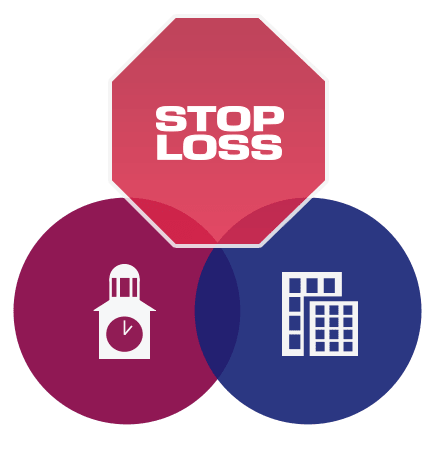Every business should be well-informed about stop-loss insurance. It is one of the well-known insurances available today. These insurance aids businesses that self-insure against big or catastrophic insurance claims.
Stop-loss insurance is primarily used in healthcare as well as employee benefits space, particularly by employers who have decided to go without any traditional group health insurance or benefits plan.

With everything around us evolving, more employers in the present time are saying a big “NO” to conventional medical benefits plans. And the major reason for this is mainly an increase in the expense of healthcare as well as the resulting increase in health benefit premiums and/or deductibles on group programs that employers provide to employees.
In order to offset the most common challenges, the majority of companies in the US are choosing self-insured medical benefits plans. These plans are not just free from state-governed insurance requirements but also employers can offer more flexible and customizable coverage, thus saving a large chunk of money.
But the truth is that every employer who self-insure is responsible for total medical expenses. A tiny virus that knocked out 30 percent of the workforce for over 10 days, or at the same time 2 employees combating cancer, and those medical expenses can surpass any financial backups or medical funds set aside by a company in no time. That is when stop-loss insurance comes handy.
The Spencer James Group, Inc. has once described stop-loss insurance as one of the “financial & risk management tools for businesses”. In short, it is not just a type of medical insurance; it is something more.
Using stop-loss insurance, an employer curbs the total cost, thus preventing a hole in his or her pocket. Most of the time, such costs exceed the expected amount. In such times, stop-loss insurance can be used to cover any additional expenses.
Needless to mention, this coverage is in the form of a reimbursement, and hence, employers are still accountable to pay the initial payment. Furthermore, one can also not overlook the fact that the stop-loss policy itself often comes with a coverage limit.
So, now that you got a clear picture of stop-loss insurance, let’s know about the two major types of stop-loss insurance.
Take a look!!!
Specific stop-loss insurance
Specific stop-loss insurance that is also known as individual stop-loss insurance protects all self-insured employers against singular high-severity or catastrophic claims on any one person.
For instance, an employee who is suffering from rare cancer is in need of a new drug to survive, which is very expensive. In this situation, specific stop-loss is indeed the best-suited insurance one can rely on.
Aggregate stop-loss insurance
Aggregate stop-loss insurance gives self-insured employers the financial protection at a point where medical claims for the entire group goes beyond the expectations an employer had for the policy term.
Many administrators have also described aggregate stop-loss insurance as “a ceiling on the dollar amount of eligible expenses that an employer would pay, in total, during a contract period.” Furthermore, they even mentioned that the stop-loss carrier can compensate an employer for aggregated claims when the contract period ends.
Read More: Best Online Term Life Insurance Companies For You
When is the stop-loss insurance claim paid?
Typically, a stop-loss insurance claim is paid on a yearly reimbursement basis. One may even find various carriers who literally allow monthly payments. However, if all those payments ended up being regarded as too great at the end of the policy year, then the employer may have to pay the carrier back. Also, it is worth noting that an employer who claims the stop-loss policy will only be compensated for losses that exceed the deductible on his or her policy.
Are there any other benefits of self-insurance along with stop-loss insurance?
When an employer self-insure and relies on stop-loss insurance to prevent 100 percent of the liability for losses, then he or she ultimately gains numerous benefits.
For instance, by removing monthly premiums, employers can actually access more cash flow that they can eventually pump back into their own businesses.
Plus, employers also acquire insight into their claims data that they will not have if they are working through any of the traditional channels. And this additional data allows self-insured employers to further generate more customizable health benefit plans.
If an employer chooses this insurance strategy, he or she will be also lucky enough to pay less tax. With that being said, the only insurance-related thing that he or she will pay tax for will be his or her stop-loss premium.
So, that was everything you must know about stop-loss insurance. I hope this blog helped you to acquire a clear understanding of stop-loss insurance.
